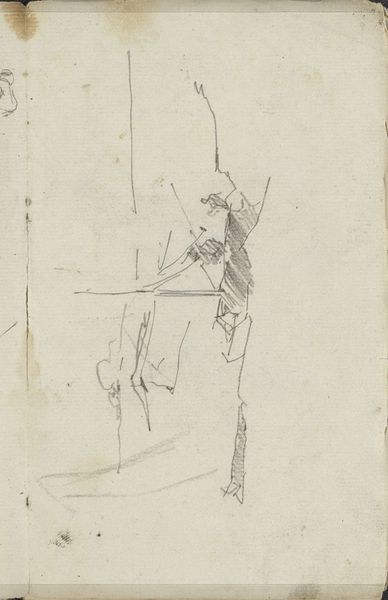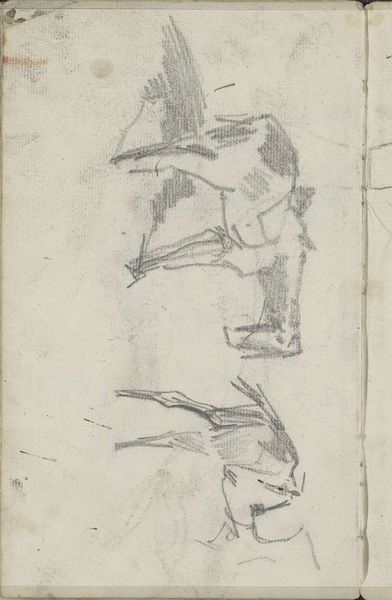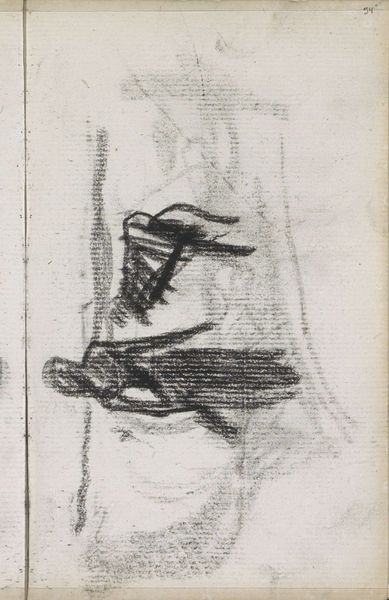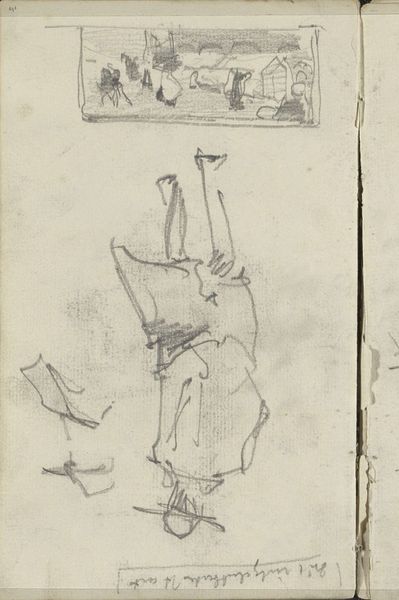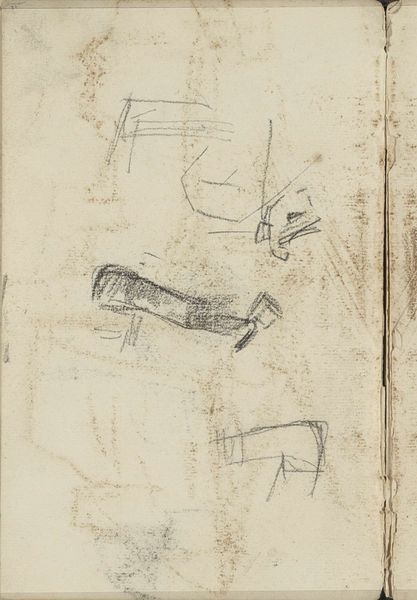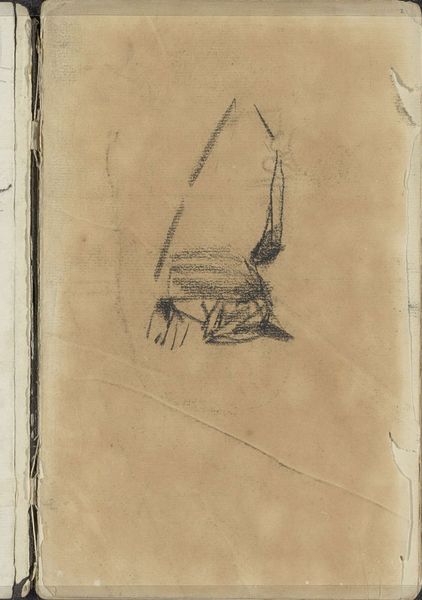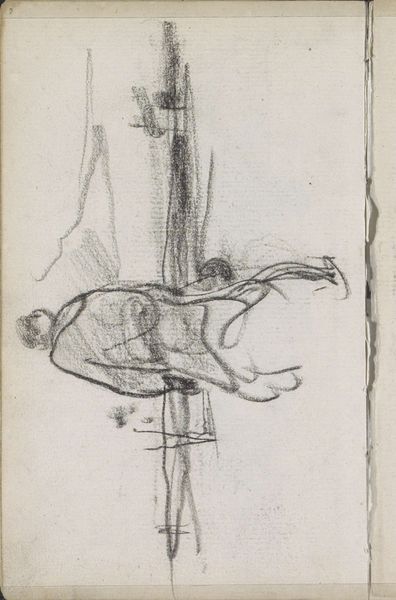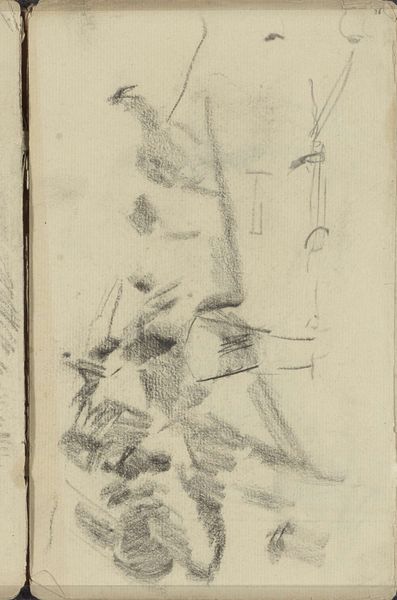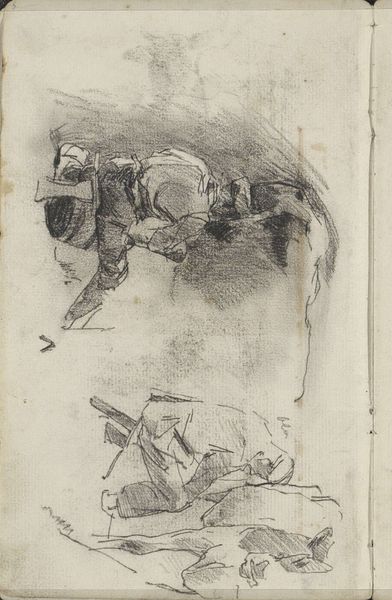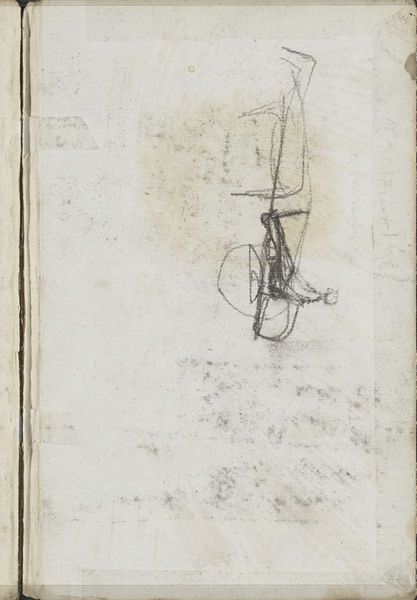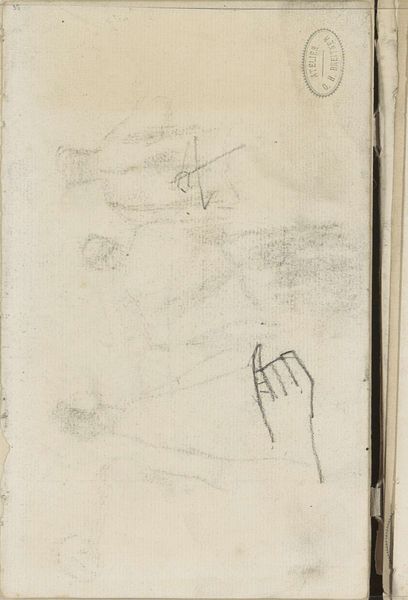
drawing, paper, pencil
#
portrait
#
drawing
#
impressionism
#
pencil sketch
#
landscape
#
figuration
#
paper
#
pencil
#
sketchbook drawing
Copyright: Rijks Museum: Open Domain
Curator: Welcome. Before us is "Studie," a pencil drawing on paper crafted by George Hendrik Breitner between 1884 and 1886. It’s held here at the Rijksmuseum. Editor: Immediately, I see vulnerability in the rapid strokes. It’s a study, yes, but the tentative lines and smudges create a feeling of something raw and exposed. Is it a figure? Perhaps multiple studies on one page? Curator: Yes, quite a few separate figures and gestures, sketched, almost superimposed onto each other. Breitner, known for his impressionistic style and his capturing of Amsterdam street life, seems here to be more concerned with pure form, the human body in its most basic representation. It speaks to the academic tradition underpinning even the most modern art movements. Editor: And how fascinating that he presents figures with this medium of humble graphite on paper; it serves as a powerful reminder of the labor and foundation involved in capturing humanity, a kind of deconstruction before representation, as opposed to an easy, romantic vision. What was the context surrounding this study? Curator: This piece dates from a crucial period in Breitner’s career. He was transitioning from academic painting to a more direct, socially engaged form of Impressionism. The sketches suggest a focus on immediate observation, influenced by his involvement with the Hague School. He wasn’t merely painting what he saw but reflecting a modernizing, rapidly changing urban landscape. The political weight lies in depicting real life, in opposition to the staged, often idealized historical subjects of the day. Editor: That's striking. By focusing on immediacy and sketching, did Breitner perhaps aim to bypass the filters of tradition and societal expectations in some way, giving us access to unfiltered observations of life, race, and gender at that time? It's almost as if these studies provide more authenticity by being "unfinished" than his meticulously completed counterparts. Curator: That’s a very compelling point. It also brings to mind Walter Benjamin’s writings on art and mechanical reproduction; these sketches, existing outside of a highly formalized sphere, resonate more deeply with a democratized vision of art, closer to the realities experienced by ordinary people. The sketch allows for that human immediacy. Editor: Absolutely, in our current age that seeks the immediacy and vulnerability that reflects lived reality, I believe this work has renewed importance in encouraging a new understanding between labor, capital and the self. Thank you for this deep dive. Curator: Thank you; seeing how a fleeting impression speaks volumes— it’s always fascinating.
Comments
No comments
Be the first to comment and join the conversation on the ultimate creative platform.
